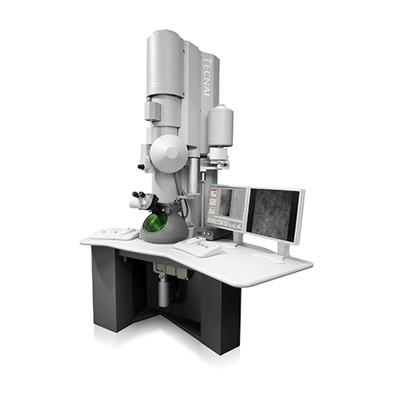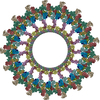+ Open data
Open data
- Basic information
Basic information
| Entry |  | |||||||||||||||||||||
|---|---|---|---|---|---|---|---|---|---|---|---|---|---|---|---|---|---|---|---|---|---|---|
| Title | Campylobacter jejuni flagellar motor, FlgQ-mCherry fusion | |||||||||||||||||||||
 Map data Map data | Structure of the Campylobacter jejuni flagellar motor with mCherry-tagged FlgQ | |||||||||||||||||||||
 Sample Sample |
| |||||||||||||||||||||
 Keywords Keywords | molecular machine / bacterial flagellar motor / molecular evolution / in situ / MOTOR PROTEIN | |||||||||||||||||||||
| Biological species |  | |||||||||||||||||||||
| Method | subtomogram averaging / cryo EM / Resolution: 81.0 Å | |||||||||||||||||||||
 Authors Authors | Drobnic T / Hendrixson DR / Beeby M | |||||||||||||||||||||
| Funding support |  United Kingdom, United Kingdom,  United States, 6 items United States, 6 items
| |||||||||||||||||||||
 Citation Citation |  Journal: bioRxiv / Year: 2024 Journal: bioRxiv / Year: 2024Title: Molecular model of a bacterial flagellar motor reveals a "parts-list" of protein adaptations to increase torque. Authors: Tina Drobnič / Eli J Cohen / Tom Calcraft / Mona Alzheimer / Kathrin Froschauer / Sarah Svensson / William H Hoffmann / Nanki Singh / Sriram G Garg / Louie Henderson / Trishant R Umrekar / ...Authors: Tina Drobnič / Eli J Cohen / Tom Calcraft / Mona Alzheimer / Kathrin Froschauer / Sarah Svensson / William H Hoffmann / Nanki Singh / Sriram G Garg / Louie Henderson / Trishant R Umrekar / Andrea Nans / Deborah Ribardo / Francesco Pedaci / Ashley L Nord / Georg K A Hochberg / David R Hendrixson / Cynthia M Sharma / Peter B Rosenthal / Morgan Beeby /     Abstract: One hurdle to understanding how molecular machines work, and how they evolve, is our inability to see their structures . Here we describe a minicell system that enables cryogenic electron microscopy ...One hurdle to understanding how molecular machines work, and how they evolve, is our inability to see their structures . Here we describe a minicell system that enables cryogenic electron microscopy imaging and single particle analysis to investigate the structure of an iconic molecular machine, the bacterial flagellar motor, which spins a helical propeller for propulsion. We determine the structure of the high-torque motor including the subnanometre-resolution structure of the periplasmic scaffold, an adaptation essential to high torque. Our structure enables identification of new proteins, and interpretation with molecular models highlights origins of new components, reveals modifications of the conserved motor core, and explain how these structures both template a wider ring of motor proteins, and buttress the motor during swimming reversals. We also acquire insights into universal principles of flagellar torque generation. This approach is broadly applicable to other membrane-residing bacterial molecular machines complexes. | |||||||||||||||||||||
| History |
|
- Structure visualization
Structure visualization
| Supplemental images |
|---|
- Downloads & links
Downloads & links
-EMDB archive
| Map data |  emd_17419.map.gz emd_17419.map.gz | 84.1 MB |  EMDB map data format EMDB map data format | |
|---|---|---|---|---|
| Header (meta data) |  emd-17419-v30.xml emd-17419-v30.xml emd-17419.xml emd-17419.xml | 20.2 KB 20.2 KB | Display Display |  EMDB header EMDB header |
| FSC (resolution estimation) |  emd_17419_fsc.xml emd_17419_fsc.xml | 13.3 KB | Display |  FSC data file FSC data file |
| Images |  emd_17419.png emd_17419.png | 72.7 KB | ||
| Masks |  emd_17419_msk_1.map emd_17419_msk_1.map | 93 MB |  Mask map Mask map | |
| Filedesc metadata |  emd-17419.cif.gz emd-17419.cif.gz | 4.9 KB | ||
| Others |  emd_17419_additional_1.map.gz emd_17419_additional_1.map.gz emd_17419_half_map_1.map.gz emd_17419_half_map_1.map.gz emd_17419_half_map_2.map.gz emd_17419_half_map_2.map.gz | 84 MB 85.4 MB 85.3 MB | ||
| Archive directory |  http://ftp.pdbj.org/pub/emdb/structures/EMD-17419 http://ftp.pdbj.org/pub/emdb/structures/EMD-17419 ftp://ftp.pdbj.org/pub/emdb/structures/EMD-17419 ftp://ftp.pdbj.org/pub/emdb/structures/EMD-17419 | HTTPS FTP |
-Validation report
| Summary document |  emd_17419_validation.pdf.gz emd_17419_validation.pdf.gz | 876.9 KB | Display |  EMDB validaton report EMDB validaton report |
|---|---|---|---|---|
| Full document |  emd_17419_full_validation.pdf.gz emd_17419_full_validation.pdf.gz | 876.6 KB | Display | |
| Data in XML |  emd_17419_validation.xml.gz emd_17419_validation.xml.gz | 17.6 KB | Display | |
| Data in CIF |  emd_17419_validation.cif.gz emd_17419_validation.cif.gz | 22.7 KB | Display | |
| Arichive directory |  https://ftp.pdbj.org/pub/emdb/validation_reports/EMD-17419 https://ftp.pdbj.org/pub/emdb/validation_reports/EMD-17419 ftp://ftp.pdbj.org/pub/emdb/validation_reports/EMD-17419 ftp://ftp.pdbj.org/pub/emdb/validation_reports/EMD-17419 | HTTPS FTP |
-Related structure data
- Links
Links
| EMDB pages |  EMDB (EBI/PDBe) / EMDB (EBI/PDBe) /  EMDataResource EMDataResource |
|---|
- Map
Map
| File |  Download / File: emd_17419.map.gz / Format: CCP4 / Size: 93 MB / Type: IMAGE STORED AS FLOATING POINT NUMBER (4 BYTES) Download / File: emd_17419.map.gz / Format: CCP4 / Size: 93 MB / Type: IMAGE STORED AS FLOATING POINT NUMBER (4 BYTES) | ||||||||||||||||||||||||||||||||||||
|---|---|---|---|---|---|---|---|---|---|---|---|---|---|---|---|---|---|---|---|---|---|---|---|---|---|---|---|---|---|---|---|---|---|---|---|---|---|
| Annotation | Structure of the Campylobacter jejuni flagellar motor with mCherry-tagged FlgQ | ||||||||||||||||||||||||||||||||||||
| Projections & slices | Image control
Images are generated by Spider. | ||||||||||||||||||||||||||||||||||||
| Voxel size | X=Y=Z: 7.002 Å | ||||||||||||||||||||||||||||||||||||
| Density |
| ||||||||||||||||||||||||||||||||||||
| Symmetry | Space group: 1 | ||||||||||||||||||||||||||||||||||||
| Details | EMDB XML:
|
-Supplemental data
-Mask #1
| File |  emd_17419_msk_1.map emd_17419_msk_1.map | ||||||||||||
|---|---|---|---|---|---|---|---|---|---|---|---|---|---|
| Projections & Slices |
| ||||||||||||
| Density Histograms |
-Additional map: Structure of the Campylobacter jejuni flagellar motor with...
| File | emd_17419_additional_1.map | ||||||||||||
|---|---|---|---|---|---|---|---|---|---|---|---|---|---|
| Annotation | Structure of the Campylobacter jejuni flagellar motor with mCherry-tagged FlgQ, unsymmetrized | ||||||||||||
| Projections & Slices |
| ||||||||||||
| Density Histograms |
-Half map: Structure of the Campylobacter jejuni flagellar motor with...
| File | emd_17419_half_map_1.map | ||||||||||||
|---|---|---|---|---|---|---|---|---|---|---|---|---|---|
| Annotation | Structure of the Campylobacter jejuni flagellar motor with mCherry-tagged FlgQ, half map | ||||||||||||
| Projections & Slices |
| ||||||||||||
| Density Histograms |
-Half map: Structure of the Campylobacter jejuni flagellar motor with...
| File | emd_17419_half_map_2.map | ||||||||||||
|---|---|---|---|---|---|---|---|---|---|---|---|---|---|
| Annotation | Structure of the Campylobacter jejuni flagellar motor with mCherry-tagged FlgQ, half map | ||||||||||||
| Projections & Slices |
| ||||||||||||
| Density Histograms |
- Sample components
Sample components
-Entire : Campylobacter jejuni flagellar motor, in FlgQ-mCherry fusion back...
| Entire | Name: Campylobacter jejuni flagellar motor, in FlgQ-mCherry fusion background |
|---|---|
| Components |
|
-Supramolecule #1: Campylobacter jejuni flagellar motor, in FlgQ-mCherry fusion back...
| Supramolecule | Name: Campylobacter jejuni flagellar motor, in FlgQ-mCherry fusion background type: organelle_or_cellular_component / ID: 1 / Parent: 0 |
|---|---|
| Source (natural) | Organism:  |
-Experimental details
-Structure determination
| Method | cryo EM |
|---|---|
 Processing Processing | subtomogram averaging |
| Aggregation state | particle |
- Sample preparation
Sample preparation
| Buffer | pH: 7.4 / Details: PBS |
|---|---|
| Grid | Model: Quantifoil R2/2 / Material: COPPER |
| Vitrification | Cryogen name: ETHANE / Chamber humidity: 95 % / Instrument: FEI VITROBOT MARK IV |
| Details | Cells were grown on MH agar, resuspended in PBS and concentrated to theoretical OD600 ~10 |
- Electron microscopy
Electron microscopy
| Microscope | FEI TECNAI F20 |
|---|---|
| Image recording | Film or detector model: FEI FALCON II (4k x 4k) / Detector mode: INTEGRATING / Average electron dose: 3.3 e/Å2 |
| Electron beam | Acceleration voltage: 200 kV / Electron source:  FIELD EMISSION GUN FIELD EMISSION GUN |
| Electron optics | Illumination mode: FLOOD BEAM / Imaging mode: BRIGHT FIELD / Nominal defocus max: 5.0 µm / Nominal defocus min: 3.5 µm |
| Experimental equipment |  Model: Tecnai F20 / Image courtesy: FEI Company |
 Movie
Movie Controller
Controller










 Z (Sec.)
Z (Sec.) Y (Row.)
Y (Row.) X (Col.)
X (Col.)





















































